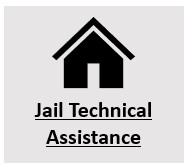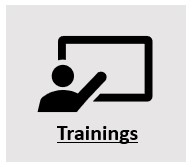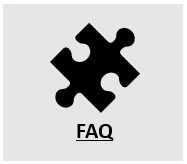Resources

General Informational Resources:
- The Office of Forensic Mental Health Services provides useful information and contact information for forensic mental health services in the state of Washington. This site also provides information on diversion as well as procedures to assist jails in expending inmates awaiting court-ordered Forensic Services.
- Washington Legal System Guide to Forensic Mental Health Services Produced by the Office of Forensic Mental Health Services, this comprehensive guide explains and describes the mental health legal system.
- Best Practices for Behavioral Health Services in Jail Settings
- Washington State Jails Map
- Washington Association of Sheriffs and Police Chiefs
- Tribal Resources and Services
General Medication Management in Correctional Settings:
- Psychiatric treatment and psychopharmacology in correctional facilities (American Academy of Psychiatry and the Law Volume 46, Number 2, 2018 Supplement) Practice Resource: Prescribing in Corrections. Also available at: https://jaapl.org/content/46/2_Supplement/S2
This resource guide covers best practices for prescribing in correctional settings. Topics covered include healthcare concerns related to medication, evidence-based prescribing practices for specific diagnoses, segregated housing, continuity of care, treatment over objection, and medication non-adherence to name a few.
Screening and Assessment:
- The National Institute of Justice’s Mental Health Screens for Corrections provides examples of two mental health-screening instruments, instructions for completing the instruments, as well as discussion about the research that led to the development and validation of the screening instruments. https://nij.ojp.gov/
- Suicide Prevention and Risk Management
- National Institute of Mental Health, Suicide Prevention
Substance Use Treatment and Management:
- Guidelines for Managing Substance Withdrawal in Jails
- Jail-Based Medication-Assisted Treatment: Promising Practices, Guidelines, and Resources for the Field Produced by the NCCHC and the National Sheriffs’ Association, this resource provides tools, treatment program information, references, and supporting documentation to help jail administrators provide effective treatment for individuals with opioid use disorder.
- Medication-assisted Treatment Inside Correctional Facilities This SAMHSA publication is a brief that provides strategies and techniques to reduce the diversions of drugs used in medication-assisted treatment programs inside correctional facilities.
- GAINS Center for Behavioral Health and Justice Transformation Center This is a SAMHSA publication of the GAINS Center website and is a hub that links to resources related to expanding access to services for people with mental and/or substance use disorders who come into contact with the justice system.
- National Institute on Drug Abuse This website provides links to a wide variety of topics related to NIDA’s mission and resources.
- Substance Abuse and Mental Health Services Administration – Forensic Assertive Community Treatment This publication provides a description of a service delivery model for individuals with serious mental illness who are involved in the criminal justice system.
- Treatment of Opioid Use Disorder in Correctional Settings
Transition Planning and Continuity of Care:
- Urban Institute Justice Policy Center – The Jail Administrator’s Toolkit for Reentry The Urban Institute publication is a comprehensive report that describes how to get started with reentry programs, assessment screens, re-entry strategies, identifying community resources, coordinating stakeholders and educating the public, requirements and standards, and measuring success.
JTA Resource Links
The Jail Technical Assistance program has been researching and identifying useful information and resources to share with a statewide network consisting of jail administrators, their staff, health services, court personnel, law enforcement, and other state agencies. Below are links to the items that have been distributed since Nov. 2021.
Incarceration and the use of segregation in jails:
- Mass Incarceration: The Whole Pie 2022
- Guest Commentary: A plea for the elimination of solitary confinement in Americas prisons
- Shifting Away from Solitary | The Marshall Project
- Solitary-Confinement: FAQs
Behavioral health topics in jails and prisons:
- Access mental-health care -and incarceration
- Incarcerated with Mental Illness: How to Reduce the Number of People with Mental Health Issues in Prison
- Women's Voices | Vera Institute
- The Overlooked Role of Jails in the Discussion of Legitimacy: Implications for Trust and Procedural Justice
- The Pretrial Pressure Cooker | Vera Institute
- DSHS announces program with SCORE Jail to provide treatment options for people waiting for competency services
Continuity of care/reentry:
- Free Reentry Resources
- Planning a Reentry Program: A Toolkit for Tribal Communities
- Preparing People for Reentry
- Returning to the Community: Health Care After Incarceration - A Guide for Health Care Reentry (cms.Gov)
- Recovery residences | Washington State Health Care Authority
Alternatives to jail:
- Four Tips to Successfully Open a Crisis Stabilization Unit
- Arrest and Jail Alternatives (AJA) Program
- Incorporating Services and Support into Pretrial Supervision: Is There a Best Model?
- Wayne County, Detroit: Jail sees dramatic population decline. Here’s why
- Thurston County Jail Diversion Program
- Reentry Star Program
- Breaking the Cycle: Prioritizing Mental Health Needs in the Courtroom
Community behavioral health and law enforcement:
- Sharing Behavioral Health Information within Police-Mental Health Collaborations
- Embedding Clinicians in the Criminal Justice System
- Expanding first response program: Highlights from Olympia WA
- More behavioral health care, housing in Oregon would spare individuals and society from pain
- For 911 Calls, Are Mental Health Specialists Often the Better Choice?
- The puzzling rise of defendants too sick to stand trial in WA
- Portland, OR, Street Response
- Trauma-Informed Approaches Across the Sequential Intercept Model
- Spokane County, WA is about to try a criminal justice reform effort that once seemed doomed
- 911 Diversion Pilot Baltimore, MD
- New Marysville, WA Venue Shines as Dynamic Civic Campus
- Mobile crisis support: WA State
Suicide prevention:
- Four innovative approaches to inmate suicide prevention
- SAMHSA Preventing Suicide
- Suicide-prevention-in-jails-and-prisons
- Suicide Prevention Resource Center
Staff training:
- Seven Tips for Defusing Violent Situations
- Two Effective Approaches to Managing the Incarcerated Population
- Prison Research Meets Practice: A Conversation on Correctional Workforce Rewards and Sanctions
Retention, recruitment, and self-care:
- Officers story of trauma and the process of healing
- Improving correction retention recruitment
- 12 Strategies for Combating Burnout in Corrections
- 10 secrets of Successful Correctional Employees
- Corrections jobs: - Rekindling your passion for the job
- How worn-down empathy can spell trouble for corrections
- Correctional officer mental health a call for change
- Working Behind the Wall: Mental Health of Correctional-Based Staff
- Train to Retain — Developing Corrections Staff
- Round table how the corrections profession was challenged in 2023
- Prison Reform & Staff Wellness Are Inextricably Linked




